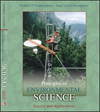Mapping Biodiversity Visit the following biodiversity web site, maintained by a university in Bonn,
Germany: http://www.botanik.uni-bonn.de/system/phytodiv.htm.
This site has excellent information on the nature of biodiversity worldwide.
Look at the colored map of plant diversity as you
answer the questions below. Note that you can also access a high-resolution
image of the same map (click above the map or go to http://www.botanik.uni-bonn.de/system/globbiod.gif).
1. How many species/unit area are represented by the red color on the map?
How many areas have this red color?
2. Look at the physiographic map in your text (page 368). What kinds
of physiographic features occur in these zones of greatest diversity? Now look
at a human population density map in your text (page 366). In what ways
do physiographic features or population density help explain regions of greatest
biodiversity? Regions of least biodiversity?
3. What is the farthest north and south latitude range of the red regions?
What is the range of species diversity north of 60 degrees latitude?
Protecting biodiversity and biomes: Marine turtles Go to the World Conservation Monitoring Center's web page http://ims.wcmc.org.uk/.
This private organization is an important international group for monitoring
the extent and conditions of wildlife and habitat conservation areas worldwide.
Find the link to Marine turtle distribution in the Indian Ocean. This link produces
an interactive map of sea turtles, of protected areas, and of critical coastal
habitat, coral reefs and mangroves in the Indian and western Pacific oceans.
1. With the map at its full extent, click on the "draw" squares to draw Flatback
turtles, then add Green turtles. What is the extent of the Flatback's range
(in yellow)? Which of the two species is more widespread? Now click on the protected
areas (polygons). This shows all types of protected areas, inland as well as
coastal. In which areas do turtle distributions and protected areas coincide
best?
2. Check that the "Zoom in" button above the map is selected, then click on
Indonesia on the map. The map will redraw closer in. Zoom in a second time in
the eastern Indonesia/northern Australia region. At this closer scale, do conservation
areas appear to cover turtle distributions better or worse than at the original
scale? (You can move around the map and zoom in further to see more detail.)
3. With the map zoomed in to eastern Indonesia and northern Australia, add
Mangroves by clicking on the square in the list of drawing features. Mangroves
are flooded coastal forests that support many coastal marine ecosystems by sheltering
young fish and crabs. Which countries in this area have the most mangroves?
(check the world political map in your book, page 362, to help identify countries.)
How much mangrove area is protected?
| 


 2002 McGraw-Hill Higher Education
2002 McGraw-Hill Higher Education